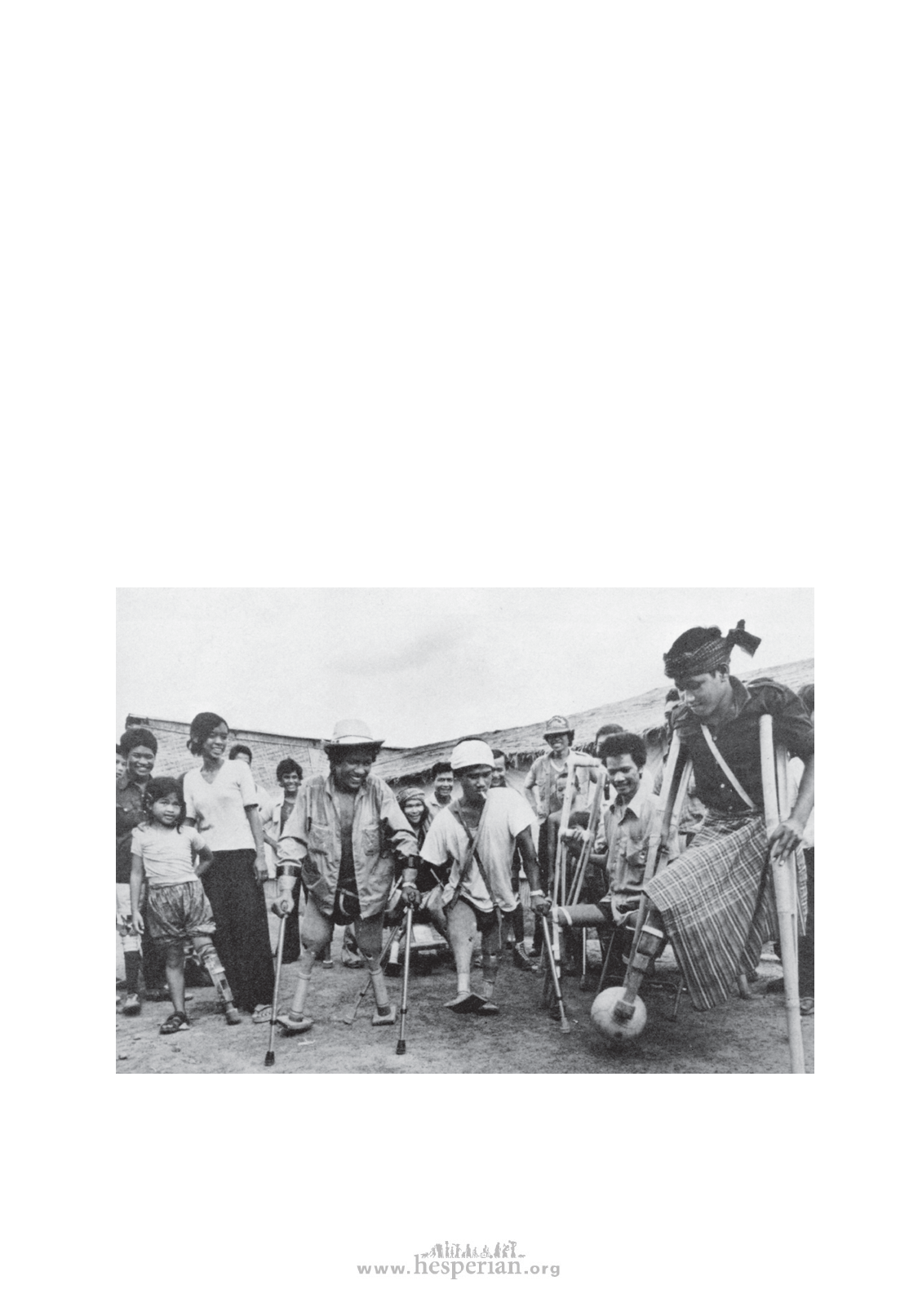
EXAMPLES OF PROGRAMS
6. H ANDICAP INTERNATIONAL ARTIFICIAL LIMB PROGRAM—
THAILAND/KAMPUCHEA
It is estimated that in the last 8 years of the
war in Kampuchea (Cambodia) more than 12,000
men, women, and children have lost their legs
from stepping on land mines. A lot of the injured
are evacuated for hospital care to a large refugee
camp, called Khao-i-dang, close to the Thai
border.
At first the hospital had no way of making or
obtaining artificial limbs. For this reason a French
relief agency (at that time SOS, or Enfants Sans
Frontières, now Handicap International) began
making low-cost artificial legs.
The workers in the large workshop are almost
all refugee amputees. Some start learning by
helping to make their own leg.
The team (run by Frenchmen, some of whom
are professional limb makers) has developed
different models of very low-cost limbs using
local materials. The bamboo limb described on
p. 628 is one example.
Bamboo is in fact the main building material for
the shop itself, the rehabilitation center next door,
and for most of the beds, aids, and equipment.
The rehabilitation playground (which served as a
model tor PROJIMO) is made completely of
bamboo. (See p. 425.)
One of the most outstanding features of the
program is the way it has spread to other areas.
Many of the amputee workers trained in Khao-i-
dang have gone back into Kampuchea and opened
small artificial limb shops. The program therefore
trains the amputees not only in the technology
of limb making, but also in basic management.
Some of the 15 ‘satellite shops’ now have teams
of several amputees working in them. The most
remote shops are run in makeshift shelters deep
in the forest near the fighting
The spirit of hard work and friendship in shops
run by amputees does much to help recent
amputees accept the loss of their limbs and get
back into the adventure of survival.
521
Aids For Living (Healthlink Worldwide)
disabled village children